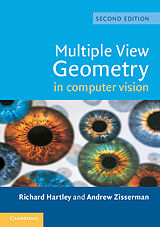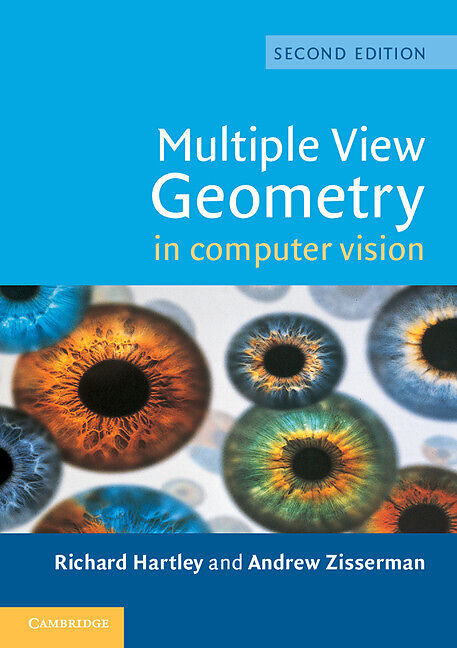Multiple View Geometry in Computer Vision
Einband:
Kartonierter Einband
EAN:
9780521540513
Untertitel:
Englisch
Genre:
Mathematik
Autor:
Richard Hartley, Andrew Zisserman
Herausgeber:
Cambridge University Press
Auflage:
2., überarb. Aufl.
Anzahl Seiten:
670
Erscheinungsdatum:
2019
ISBN:
978-0-521-54051-3
How to reconstruct scenes from images using geometry and algebra, with applications to computer vision.
Autorentext
fm.author_biographical_note1 fm.author_biographical_note2
Klappentext
A basic problem in computer vision is to understand the structure of a real world scene. This book covers relevant geometric principles and how to represent objects algebraically so they can be computed and applied. Recent major developments in the theory and practice of scene reconstruction are described in detail in a unified framework. Richard Hartley and Andrew Zisserman provide comprehensive background material and explain how to apply the methods and implement the algorithms. First Edition HB (2000): 0-521-62304-9
Zusammenfassung
The theory and practice of scene reconstruction are described in detail in a unified framework. The new edition features an extended introduction covering the key ideas in the book (which itself has been updated with additional examples and appendices) and significant new results which have appeared since the first edition.
Inhalt
1. Introduction - a tour of multiple view geometry; Part 0. The Background: Projective Geometry, Transformations and Estimation: 2. Projective geometry and transformations of 2D; 3. Projective geometry and transformations of 3D; 4. Estimation - 2D projective transforms; 5. Algorithm evaluation and error analysis; Part I. Camera Geometry and Single View Geometry: 6. Camera models; 7. Computation of the camera matrix; 8. More single view geometry; Part II. Two-View Geometry: 9. Epipolar geometry and the fundamental matrix; 10. 3D reconstruction of cameras and structure; 11. Computation of the fundamental matrix F; 12. Structure computation; 13. Scene planes and homographies; 14. Affine epipolar geometry; Part III. Three-View Geometry: 15. The trifocal tensor; 16. Computation of the trifocal tensor T; Part IV. N -View Geometry: 17. N-linearities and multiple view tensors; 18. N-view computational methods; 19. Auto-calibration; 20. Duality; 21. Chirality; 22. Degenerate configurations; Part V. Appendices: Appendix 1. Tensor notation; Appendix 2. Gaussian (normal) and chi-squared distributions; Appendix 3. Parameter estimation. Appendix 4. Matrix properties and decompositions; Appendix 5. Least-squares minimization; Appendix 6. Iterative Estimation Methods; Appendix 7. Some special plane projective transformations; Bibliography; Index.

Leider konnten wir für diesen Artikel keine Preise ermitteln ...
billigbuch.ch sucht jetzt für Sie die besten Angebote ...
Die aktuellen Verkaufspreise von 6 Onlineshops werden in Realtime abgefragt.
Sie können das gewünschte Produkt anschliessend direkt beim Anbieter Ihrer Wahl bestellen.
Loading...
Die aktuellen Verkaufspreise von 6 Onlineshops werden in Realtime abgefragt.
Sie können das gewünschte Produkt anschliessend direkt beim Anbieter Ihrer Wahl bestellen.
| # | Onlineshop | Preis CHF | Versand CHF | Total CHF | ||
|---|---|---|---|---|---|---|
| 1 | Seller | 0.00 | 0.00 | 0.00 |
